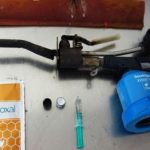
Iran has started enriching its uranium supply to 60 percent purity — the closest the country has ever come to the level needed for a weapon — in response to the sabotage of an Iranian nuclear site last weekend linked to Israel.
The move by Iran, reported Friday on state media, made good on threats Iranian officials had announced after the sabotage, which have cast a new cloud over talks to save the 2015 deal limiting Iran’s nuclear abilities in exchange for sanctions relief.
President Hassan Rouhani of Iran has gone further, boasting as those talks resumed in Vienna that his scientists could easily enrich uranium to 90 percent purity — weapons-grade fuel — although he insisted, as Iranian leaders have repeatedly, that Iran “is never seeking to make an atomic bomb.”
So what is the significance of uranium’s purity, which is at the heart of the accord that negotiators are trying to rescue? And why is Iran making these claims? Some basic questions and answers:
What is the goal of uranium enrichment?
Uranium contains a rare radioactive isotope, called U-235, that can be used to power nuclear reactors at low enrichment levels and to fuel nuclear bombs at much higher levels. The goal of uranium enrichment is to raise the percentage levels of U-235, which is often done through the use of centrifuges — machines that spin a form of unrefined uranium at high speeds.
Under the nuclear agreement, known as the Joint Comprehensive Plan of Action, Iran was allowed to keep up to 300 kilograms, or 660 pounds, of uranium
Continue reading – Article source
Posts from the same category:
- None Found









